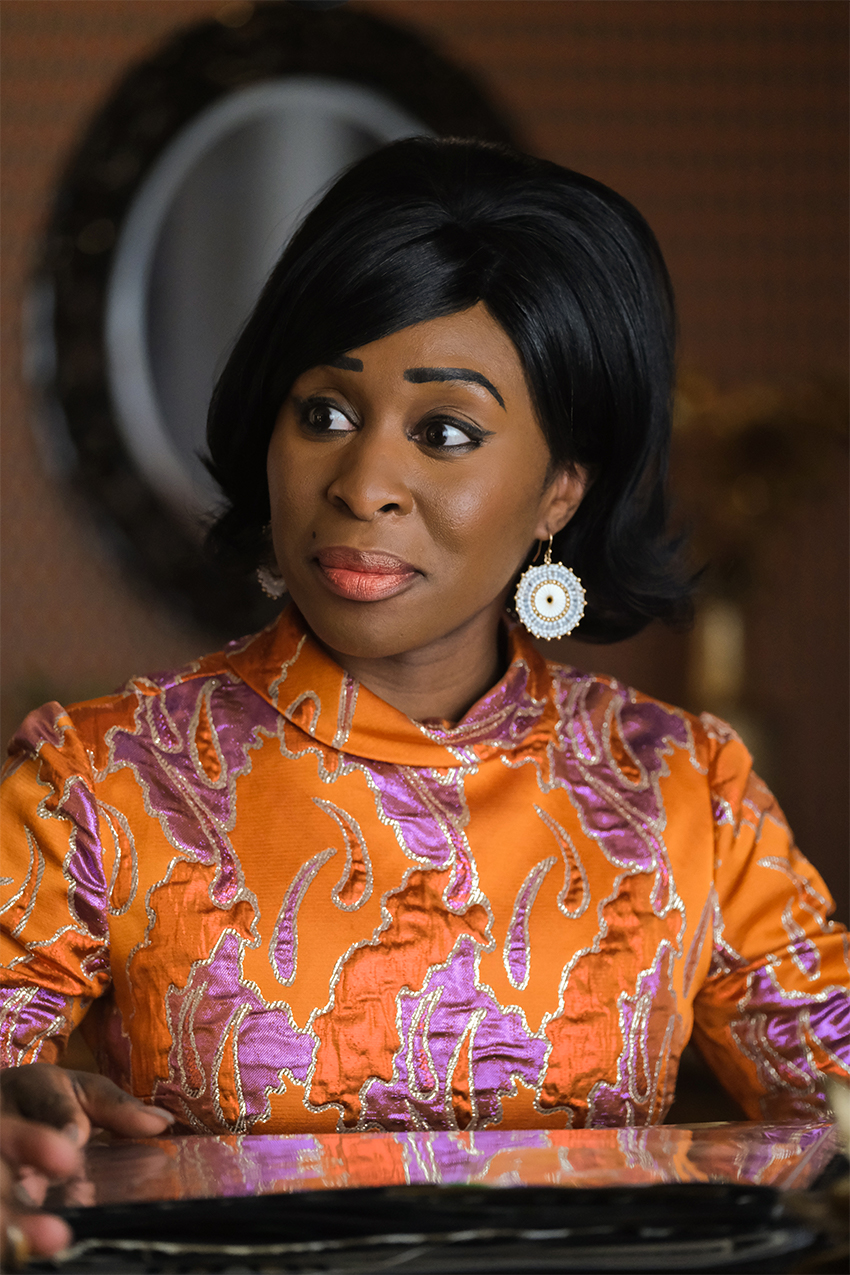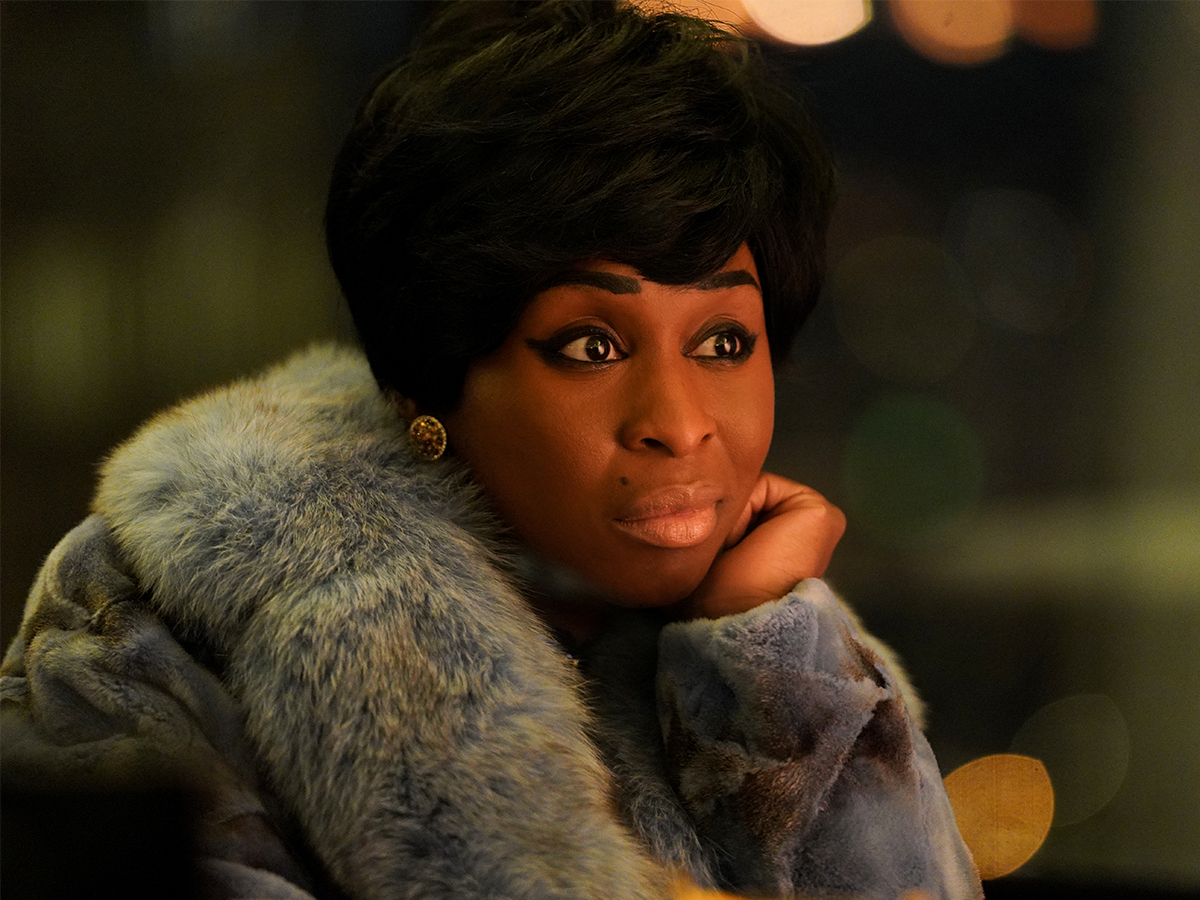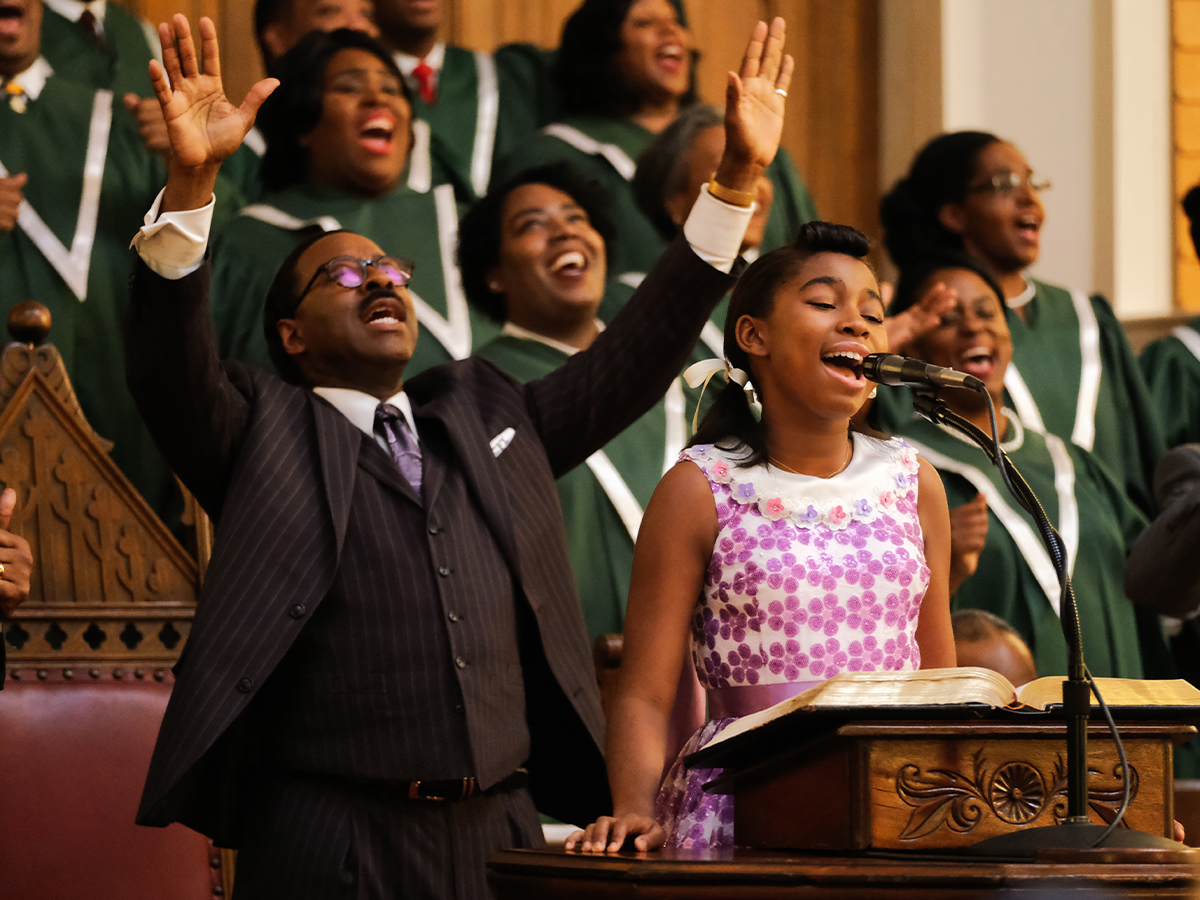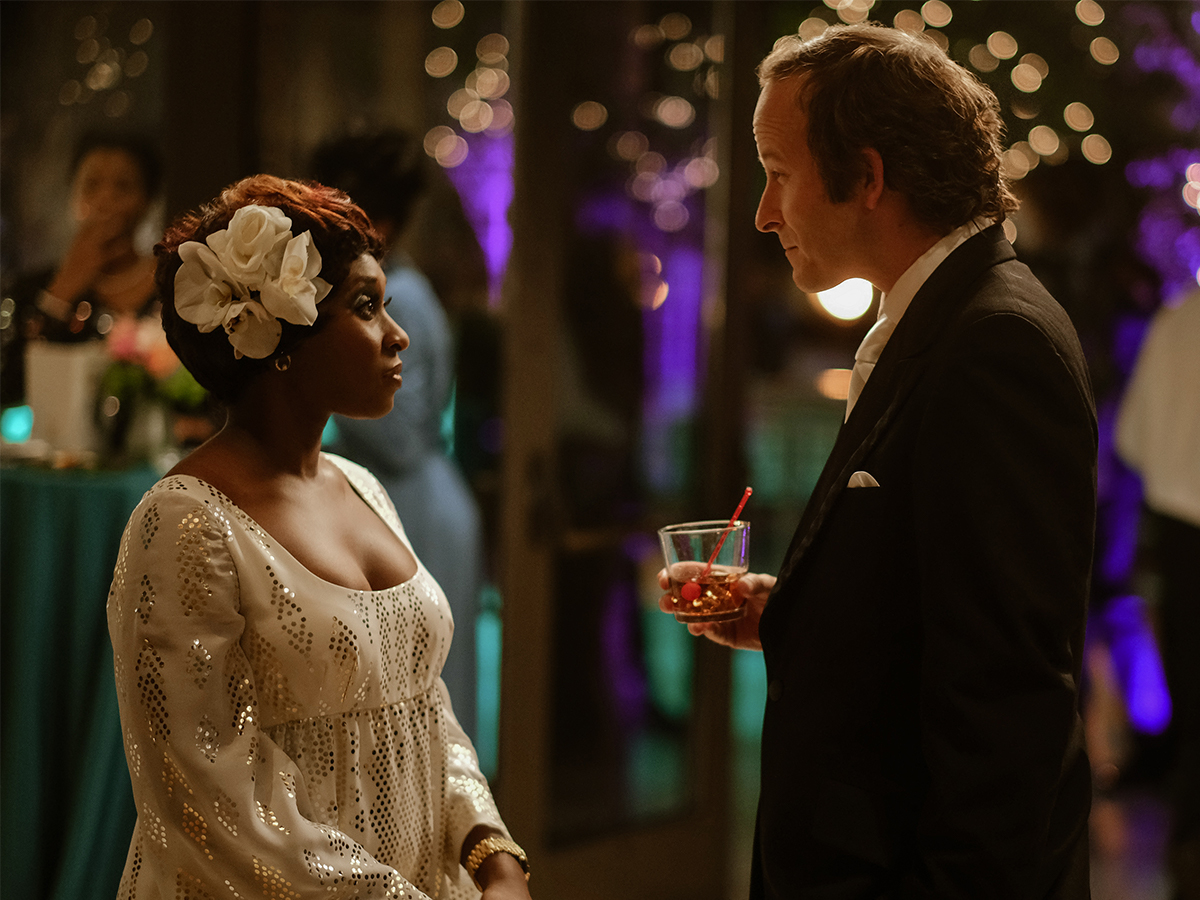History and Fashion Buffs Can Get Behind This Genius: Aretha TV Series


When we think of fashion, we tend to focus on the latest trends or our shopping lists—all of which are huge parts of what makes consumer fashion, well, fashionable. But there is another aspect of style that we must respect: costume design. Much like the influence of glossy magazine pages, film and the outfits displayed on-screen can tell stories that are otherwise overlooked. Think of award-winning movies like Judas and the Black Messiah or fan-favorite shows like I May Destroy You. Cinema and its stylish characters have not only carried us through tumultuous times, but they have also amplified voices whose messages resonate around the globe. Today, we’re listening closely to the voice behind an image of musician and icon Aretha Franklin.
Realistically, you’ve probably heard Franklin’s music before—her career spanned six decades, and her influence on the music industry is profound. But what about her message? The legendary diva’s story and style are explored in the Nat Geo series Genius: Aretha, whose third installation of the miniseries premiered on Hulu this past spring. While the show has been out for a minute, its costumes make it worth revisiting. They encapsulate the evolution of the queen of soul, and the show’s Tony-winning designer, Jennifer Bryan, gets every costume right. Ahead, you’ll hear the designer speak about her career and how she created period-appropriate costumes for the series.

Can you tell our readers a little about yourself and how you got into costume design?
I’m originally from Jamaica (I’m an island girl), and I studied fashion design and merchandising at Pratt Institute in Brooklyn. After graduating, I didn’t know anything about costume design as a career path, but I always loved movies and fashion. By chance, I stumbled upon the career when a friend of mine was working on a film and told me I should try to get into the costume department. I had no idea what it even entailed, but I got the position as an intern, and once I was exposed to that world, that was it. It was like a whole new language to me, a whole new way of approaching clothing in terms of telling a story instead of a style or trend of the moment, which fashion design is more geared toward.
What has been your favorite project to work on thus far, and why?
I’ve had so many wonderful opportunities, but right now, my favorite would be Genius: Aretha. Second, of course, would be Breaking Bad. They kind of go neck and neck, but they’re favorites for different reasons. For Genius: Aretha, the opportunity to design for such a broad scope of time because her career was so long was exciting to me. Although the show is about Franklin, it also has a historical timeline that goes along with it. I was able to design costumes from the ’40s all the way up to late 1998 in all these different facets of life, from performance clothes to the everyday style.

Not to mention that all of it is happening against the backdrop of the African American diaspora of that time—the Civil Rights Movement, the upheaval, and the progress had to all be reflected within the costumes. You don’t always get that wide of a spectrum in a project for a costume designer, so that’s what made it exciting.

Other than being able to design for an extended time period, what about this series interested you?
I grew up with her music—that alone was enough for me. She’s an icon, and I always loved Aretha Franklin growing up. My family would listen to her and dance to it. Her music was a massive part of my life. Not to mention, she was this huge force within the industry. How often do you have a female musician who has that much longevity and that much global reach? That blew my mind. And when I heard about the project, I knew I wanted to have a shot to be a part of it, and I’m so grateful I could because it’s been like my dream job.

Did you find it challenging to approach storytelling through costumes with a much "shorter” window, given the miniseries format?
It was a tight fit because you only have a small number of hours to tell your story visually. Still, my guidelines were the script and collaborating with Suzan-Lori Parks (the creator and showrunner) and Anthony Hemingway (the director). That was great because, even though I had these tight historical timelines, I had historical reference points to what happened. Hence, there was always a really good, verifiable baseline for me to start to pull out and move onto my interpretation of what she might have worn. And from there, I had to do a lot of research around environments around those time frames, and it helped inform me how I wanted to style the characters.

How much time did you spend researching to inspire the costumes in this series? Did you draw a lot of the costume inspiration from historical documentation, or did you take more creative agency with Franklin’s looks?
No costume designer ever gets enough time to do all the research they want to do. Before we started production, I had about six weeks to collect material. I amassed thousands of photographs of Aretha Franklin, her family, her kids, basically all the available pictures. I also researched the other characters, the background, the entire atmosphere of each of these periods. Then, I took my research, melded it into the written script, and conversed with the writer, the director, and the production designer to get the baseline down. Then, I started to think of the pieces I wanted to create and the historical pieces we tried to source or replicate. It was fascinating and called upon many more tools in the skill box that I wouldn’t use in a classic series because of the nature of the show.

How is designing costumes for a period piece different from contemporary works?
It’s different because people have to rely on your knowledge more of the time period. After all, in contemporary shows, everyone is present in the 21st century—they know what a pair of jeans look like. But with period costumes, anything that goes later than 25 years to the dawn of humanity, people have to rely upon the costume designer because that’s what we know. We know which fabrics existed, which color palettes existed, what the silhouette was, and we’re called to use our skills to deliver that.

How did you go about sourcing the costumes for this series? Were they vintage? Custom-made?
A combination of all of those things—vintage sourcing from thrift stores to my friends' parents’ closets to the more highly curated vintage sources. You know, people that are curators and collectors of vintage clothing at the museum level. I have some collectors that I either bought or rented pieces from or re-created in my fabrics. And then, there are my own from-scratch designed pieces. Take, for example, little Aretha’s costumes. Vintage children’s dresses don’t typically survive, so I got to create all of her pieces from scratch.

When creating a concept for Franklin’s looks, what did you want them to say? What role did you feel they played in the development of her storyline?
I just want people to recognize the flair and the flamboyance that she had and her very distinct style. Her performance style was different than when she would be at home in the kitchen or hosting an at-home soirée. She had her stages in her life, and that was reflected through her style. I hope, through all eight episodes, we were able to hold up a mirror to as much of her personal life as we knew and have learned from research about her and the people that remember her because it hasn’t been that long since she’s been gone.

Was there anything you learned through this project about Franklin that you might not have known before? Is there something you think viewers will learn about her from this?
Something I learned about her was how much she was an activist. I kind of knew about it, but I didn’t realize that she was so committed to the cause back in the day when that was critical for African Americans. So you see her evolution into awareness reflected through her style, where she begins to wear an afro, and her style becomes more Afro-centric. It’s like she wore her commitment to things on her sleeve.

I also think people will watch this series and learn more about the struggles she went through. When we look at celebrities, we believe it’s all glamorous. We say, "Oh, what a fabulous home, fabulous clothes, or a fabulous life,” and sometimes, we’re not aware they have trials and tribulations just like we do. You’ll see that it’s not to give you a glamorized, fictionalized version of her in the show. She was real, and we wanted to show the normal aspects of her life and then the "genius” aspects to get a complete picture of her.

In the series, one moment that stood out was when Time magazine was profiling Franklin, and even though she puts in all this effort to control the way she’s perceived, the profile ends up being extremely negative. With her costumes around this moment, did you feel the need to show how, through clothing, Franklin was constantly conscious of how others perceive her and how respectability politics may have influenced her style?
Yes, I did because there’s a line within the show where Aretha and her sister are talking about their careers and if they’re ever going to break into the industry, and she says, "As long as we feel good, we look good,” and that resonated with me. It was like she was so desperately wanting to feel good about everything she was doing, the sacrifices she was making to share her talents with the world, and back then, it was challenging to break into the industry. Now, people get agents, but it was rare for Black people to get on a national cover of a magazine.

Back then, as a Black person, you had to protect your image because mainstream media was looking to reinforce negative stereotypes about Black people. So she was very guarded with her image and was trying to make herself be seen in the light she wanted to be seen in, and that influenced all the costumes. When I was out shopping for fabric and costumes, I was thinking about what a Black family would wear when inviting a white reporter into their home. I was thinking about all these little things. It goes back to respectability politics and her being in the public eye.

There are so many great costumes in this series—did you have a favorite?
My favorite design of all is the first one I did: a navy silk gown with these black, iridescent rooster feathers around the bust that Franklin wears in one of her first concerts. Aretha loved feathers and fur, so that was the first design I did, and I created it before I even saw the first script, before I even got hired. It was like my good luck design, and I was like, "If I get this show, this gown is going somewhere," and I found a place to put in the show.

What was it like working with your costume department and other teams to bring this series to life?
Creating costumes is not a task you can do on your own, so it was a blessing to have such an incredible costume department—they rose to the occasion. In television, we have to do things so fast, and they were there for me every step of the way and met every challenge and deadline working long hours. Not to mention, two-thirds of the way through filming, we got shut down due to COVID-19. And that impacted us because we were in the middle of constructing the costumes and sourcing them, and then I couldn’t do anything, so we had to wait for things to start back up again. But once we began filming again, my whole crew returned and restarted with the same enthusiasm and fervor for the project. I believe that’s because we wanted to get this show to the screen. We had put so much blood, sweat, and time into it, and we wanted it to see the world and for the world to see it.

Do you feel like the interruption allowed for you to build a stronger connection with your team and to the film?
It did, and it allowed me to spend more time researching for the show, so it worked to our advantage to dig a little bit deeper and do more intricate designs and have more time to plan out the rest of the episodes. One of my favorite looks from the series (what Franklin wears to the 1997 Grammy Awards when she meets Clive Davis at the after-party) came out of that, and we wouldn’t have had been able to re-create it without the extra time. I’m so proud of this look and everything we were able to pull off with these costumes.

What do you hope people will take away from your work and the series?
That it was fabulous.
Next: Rebecca Dayan Embodies '70s Model Muse Elsa Peretti in Netflix's Halston

Jasmine Fox-Suliaman is a freelance writer and editor living in New York City. What began as a pastime (blogging on Tumblr) transformed into a lifelong passion for unveiling the connection between fashion and culture on the internet and in real life. Over the last decade, she's melded her extensive edit and social background to various on-staff positions at Who What Wear, MyDomaine, and Byrdie. More recently, she’s become a freelance contributor to other publications including Vogue, Editorialist, and The Cut. Off the clock, you can find her clutching her cell phone as she's constantly scrolling through TikTok and The RealReal, in search of the next cool thing.





